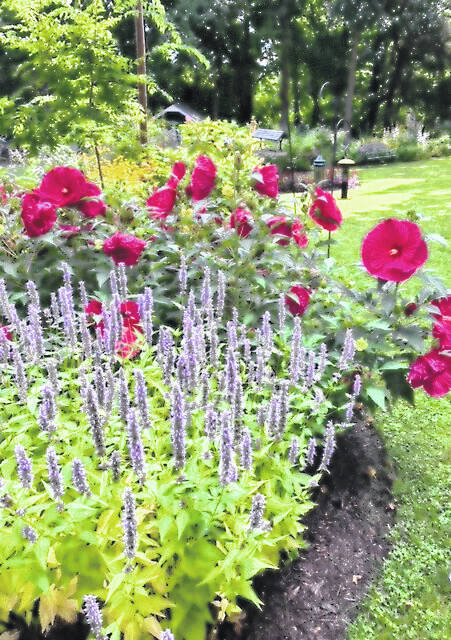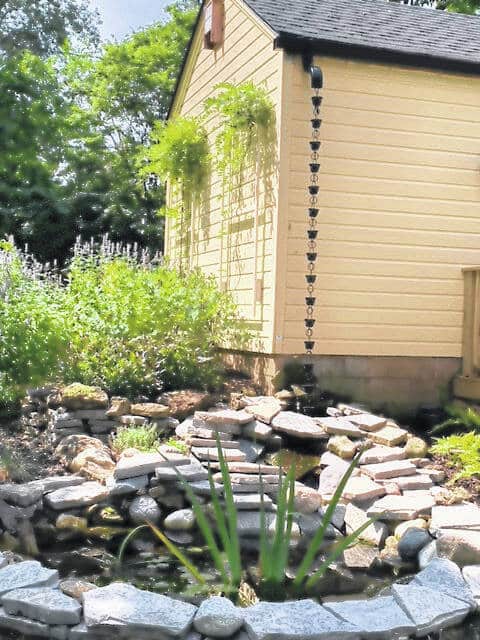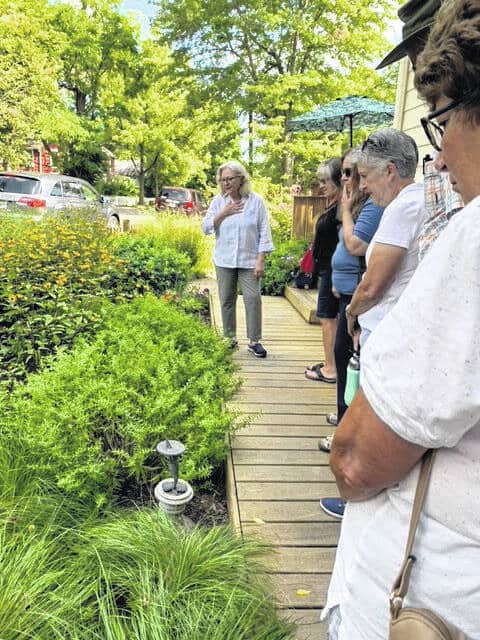
Bergamot and swamp rose mallow flowers at Catherine Zimmerman’s native plant gardens in Yellow Springs.
Courtesy photo

Landscaping featuring American wisteria plants at Catherine Zimmerman’s native plant garden in Yellow Springs.
Courtesy photo

Tipp City Garden Club members take a tour of Catherine Zimmerman’s native plant garden in Yellow Springs on Aug. 2.
Courtesy photo
TIPP CITY — The Tipp City Garden Club members traveled to Yellow Springs on Aug. 2 to tour the native plant gardens of Catherine Zimmerman.
At the age of five, Zimmerman’s infatuation with flowers and plants was influenced by her father, a farmer. He gave each of his six children a patch of land to grow whatever they wanted. He taught them things like feeding the soil, and in turn, the soil would feed the plants.
In the early 1970s, Zimmerman was the first camerawoman in Dayton for Channel 2 news. Her successes behind the camera led to her becoming an award-winning director of photography and documentary filmmaker in the Washington D.C. area.
Her second career as a certified horticulturist and landscape designer focused on the balance in the garden and the special interaction between species, soil, water, and sun which inspired the creation of “The Meadows Project.” Anyone interested in learning more about Zimmerman’s environmental films and book should visit themeadowproject.com.
“The best thing we can do to help pollinators and biodiversity is to plant native plants. Native species are always better than non-native species in fueling food webs; not all native plants are equal. Keystone native species are superior because they support many more wildlife species. They do this by hosting greater numbers of butterflies, moths, and skippers, and by providing nutritious berries, seeds, pollen and nectar,” Zimmerman said.
Club members came away with several tips on how to incorporate native plants in their yards yet this growing season and the multitude of benefits.


